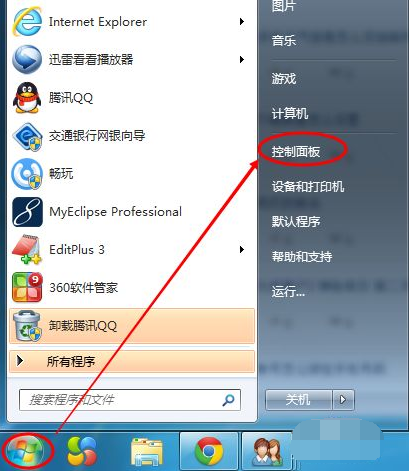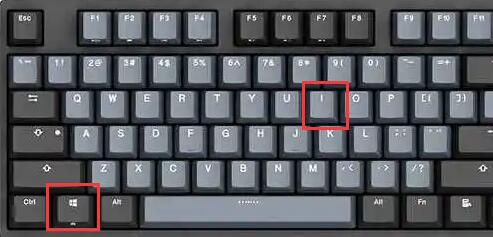读取树状数据的方法
一般在读取用“邻接列表算法”组织的数据时,需要使用递归逐层读取
或者读取数据到数组,然后用递归或非递归的方法再行处理
这里介绍一种边读边生成“树状”数组的方法,希望对你有用
mysql_connect();//测试数据$sql =<<< SQLselect * from ( select '1' as id, '0' as pid, 'Food' as title union all select '2', '1', 'Fruit' union all select '3', '2', 'Red' union all select '4', '3', 'Cherry' union all select '5', '2', 'Yellow' union all select '6', '5', 'Banana' union all select '7', '1', 'Meat' union all select '8', '7', 'Beef' union all select '9', '7', 'Pork' ) t order by pid, idSQL;$rs = mysql_query($sql);$res = array(); //结果数组$ind = array(); //索引数组while($row = mysql_fetch_assoc($rs)) { list($id, $pid) = array_values($row); $ind[$id] = $row; if(isset($ind[$pid])) $ind[$pid]['child'][$id] =& $ind[$id]; //构造索引 if($pid == 0) $res[$id] =& $ind[$id]; //转存根节点组}echo '<xmp>' . print_r($res, 1);Array (
[1] => Array
(
[id] => 1
[pid] => 0
[title] => Food
[child] => Array
(
[2] => Array
(
[id] => 2
[pid] => 1
[title] => Fruit
[child] => Array
(
[3] => Array
(
[id] => 3
[pid] => 2
[title] => Red
[child] => Array
(
[4] => Array
(
[id] => 4
[pid] => 3
[title] => Cherry
)
)
)
[5] => Array
(
[id] => 5
[pid] => 2
[title] => Yellow
[child] => Array
(
[6] => Array
(
[id] => 6
[pid] => 5
[title] => Banana
)
)
)
)
)
[7] => Array
(
[id] => 7
[pid] => 1
[title] => Meat
[child] => Array
(
[8] => Array
(
[id] => 8
[pid] => 7
[title] => Beef
)
[9] => Array
(
[id] => 9
[pid] => 7
[title] => Pork
)
)
)
)
)
)
回复讨论(解决方案)
支持版主
工作几年,一直用这用处理无限分类,这个类不是我写的,希望作者来认领,有时也要扩展一些方法。但基础方法已经足够了
class Tree{ public $data=array(); public $cateArray=array(); function Tree() { } function setNode ($id, $parent, $value) { $parent = $parent?$parent:0; $this->data[$id] = $value; $this->cateArray[$id] = $parent; } function getChildsTree($id=0) { $childs=array(); foreach ($this->cateArray as $child=>$parent) { if ($parent==$id) { $childs[$child]=$this->getChildsTree($child); } } return $childs; } function getParentsTree($id=0) { $parents=array(); foreach ($this->cateArray as $child=>$parent) { if ($child ==$id) { $parents[$parent]=$this->getParentsTree($parent); } } return $parents; } function getChilds($id=0) { $childArray=array(); $childs=$this->getChild($id); foreach ($childs as $child) { $childArray[]=$child; $childArray=array_merge($childArray,$this->getChilds($child)); } return $childArray; } function getChild($id) { $childs=array(); foreach ($this->cateArray as $child=>$parent) { if ($parent==$id) { $childs[$child]=$child; } } return $childs; } function getParents($id) { $parentArray=array(); $parents=$this->getParent($id); foreach ($parents as $parent) { $parentArray[]=$parent; $parentArray=array_merge($parentArray,$this->getParents($parent)); } return $parentArray; } function getParent($id) { $parents=array(); foreach ($this->cateArray as $child=>$parent) { if ($child==$id) { $parents[$parent]=$parent; } } return $parents; } //单线获取父节点 function getNodeLever($id) { $parents=array(); if (key_exists($this->cateArray[$id],$this->cateArray)) { $parents[]=$this->cateArray[$id]; $parents=array_merge($parents,$this->getNodeLever($this->cateArray[$id])); } return $parents; } function getLayer($id,$preStr='|-') { return str_repeat($preStr,count($this->getNodeLever($id))); } function getValue ($id) { return $this->data[$id]; } // end func}
=& 这个是运算符?
很好的算法,参考一下
不错,值得借鉴。
感谢版主分享
支持版主
=& 这个是运算符?
方法不错,收藏
初学者,看的有点蒙
好东西!!
研究盐?鸡,好东西
很好的方法
正在找这捏~谢楼主~
我以为语言都是相通的,但是还是看不懂,看样功力不够
还好 谢谢贴主赐教 。。。
版主大哥~~再把你这个输出的树状数组转成以ID排序的二维数组呢?
Array([1]=>([id] => 1
[pid] => 0
[title] => Food),
[2]=>]=>([id] => 2
[pid] => 0
[title] => Fruit),.....................
支持支持支持
不错的思路,代码蛮简洁
很好的方法
嗯嗯,不错哦!
不错,值得看看
好东西,收藏了
树状数据存在数据库中吗?
看了很久不明白,为什么要这样来查出数据?
直接用循环不就可以了?
难者不会,会者不难的啊!
学习,学习,谢谢
很好的资源.谢谢
初来乍到!回帖支持下
楼主幸苦了。谢谢分享此
好,呵呵呵呵呵
这是什么玩意
楼主幸苦了。值得学习
很好啊
真的很不错
学习,感谢楼主
 演示win7调整屏幕亮度的方法Jul 08, 2023 pm 07:49 PM
演示win7调整屏幕亮度的方法Jul 08, 2023 pm 07:49 PM不同的电脑系统在调整屏幕亮度的操作方法上会有些不同,最近就有使用win7系统的网友不知道win7怎么调整屏幕亮度,看久了电脑眼睛比较酸痛。下面小编就教下大家win7调整屏幕亮度的方法。具体的操作步骤如下:1、点击win7电脑左下角的“开始”,在弹出的开始菜单中选择“控制面板”打开。2、在打开的控制面板中找到“电源选项”打开。3、也可以用鼠标右键电脑右下角的电源图标,在弹出的菜单中,点击“调整屏幕亮度”,如下图所示。两种方法都可以用。4、在打开的电源选项窗口的最下面可以看到屏幕亮度调整的滚动条,直
 win10监控摄像头打开照片的方法Jul 10, 2023 pm 09:41 PM
win10监控摄像头打开照片的方法Jul 10, 2023 pm 09:41 PM如果我们手头没有手机,只有电脑,但我们必须拍照,我们可以使用电脑内置的监控摄像头拍照,那么如何打开win10监控摄像头,事实上,我们只需要下载一个相机应用程序。打开win10监控摄像头的具体方法。win10监控摄像头打开照片的方法:1.首先,盘快捷键Win+i打开设置。2.打开后,进入个人隐私设置。3.然后在相机手机权限下打开访问限制。4.打开后,您只需打开相机应用软件。(如果没有,可以去微软店下载一个)5.打开后,如果计算机内置监控摄像头或组装了外部监控摄像头,则可以拍照。(因为人们没有安装摄
 基于Java的机器视觉实践和方法介绍Jun 18, 2023 am 11:21 AM
基于Java的机器视觉实践和方法介绍Jun 18, 2023 am 11:21 AM随着科技的不断发展,机器视觉技术在各个领域得到了广泛应用,如工业自动化、医疗诊断、安防监控等。Java作为一种流行的编程语言,其在机器视觉领域也有着重要的应用。本文将介绍基于Java的机器视觉实践和相关方法。一、Java在机器视觉中的应用Java作为一种跨平台的编程语言,具有跨操作系统、易于维护、高度可扩展等优点,对于机器视觉的应用具有一定的优越性。Java
 win7怎么调屏幕亮度的两种简单方法Jul 08, 2023 pm 06:33 PM
win7怎么调屏幕亮度的两种简单方法Jul 08, 2023 pm 06:33 PM目前有很多屏幕亮度调整软件,我们可以通过使用软件进行快速调整或者通过显示器上自带的亮度功能进行调整。以下是详细的Win7屏幕亮度调整方式,您可以通过教程中的方法进行快速调整即可。Win7系统电脑怎么调节屏幕亮度教程:1、依次点击“计算机—右键—控制面板”,如果没有也可以在搜索框中进行搜索。2、点击控制面板下的“硬件和声音”,或者点击“外观和个性化”都可以。3、点击“NVIDIA控制面板”,有些显卡可能是AMD或者Intel的,请根据实际情况选择。4、调节图示中亮度滑块即可。5、还有一种方法,就是
 PHP文件下载方法及常见问题解答Jun 09, 2023 pm 12:37 PM
PHP文件下载方法及常见问题解答Jun 09, 2023 pm 12:37 PMPHP是一个广泛使用的服务器端编程语言,它的许多功能和特性可以将其用于各种任务,包括文件下载。在本文中,我们将了解如何使用PHP创建文件下载脚本,并解决文件下载过程中可能出现的常见问题。一、文件下载方法要在PHP中下载文件,我们需要创建一个PHP脚本。让我们看一下如何实现这一点。创建下载文件的链接通过HTML或PHP在页面上创建一个链接,让用户能够下载文件。
 Vue 中的 createApp 方法是什么?Jun 11, 2023 am 11:25 AM
Vue 中的 createApp 方法是什么?Jun 11, 2023 am 11:25 AM随着前端开发的快速发展,越来越多的框架被用来构建复杂的Web应用程序。Vue.js是流行的前端框架之一,它提供了许多功能和工具来简化开发人员构建高质量的Web应用程序。createApp()方法是Vue.js中的一个核心方法之一,它提供了一种简单的方式来创建Vue实例和应用程序。本文将深入探讨Vue中createApp方法的作用,其如何使用以及使用时需要了解
 Go 语言中的方法是怎样定义和使用的?Jun 10, 2023 am 08:16 AM
Go 语言中的方法是怎样定义和使用的?Jun 10, 2023 am 08:16 AMGo语言是近年来备受青睐的编程语言,因其简洁、高效、并发等特点而备受开发者喜爱。其中,方法(Method)也是Go语言中非常重要的概念。接下来,本文就将详细介绍Go语言中方法的定义和使用。一、方法的定义Go语言中的方法是带有接收器(Receiver)的函数,它是一个与某个类型绑定的函数。接收器可以是值类型或者指针类型。用于接收者的参数可以在方法名
 使用PHP数组实现数据缓存和存储的方法和技巧Jul 16, 2023 pm 02:33 PM
使用PHP数组实现数据缓存和存储的方法和技巧Jul 16, 2023 pm 02:33 PM使用PHP数组实现数据缓存和存储的方法和技巧随着互联网的发展和数据量的急剧增长,数据缓存和存储成为了我们在开发过程中必须要考虑的问题之一。PHP作为一门广泛应用的编程语言,也提供了丰富的方法和技巧来实现数据缓存和存储。其中,使用PHP数组进行数据缓存和存储是一种简单而高效的方法。一、数据缓存数据缓存的目的是为了减少对数据库或其他外部数据源的访问次数,从而提高


핫 AI 도구

Undresser.AI Undress
사실적인 누드 사진을 만들기 위한 AI 기반 앱

AI Clothes Remover
사진에서 옷을 제거하는 온라인 AI 도구입니다.

Undress AI Tool
무료로 이미지를 벗다

Clothoff.io
AI 옷 제거제

AI Hentai Generator
AI Hentai를 무료로 생성하십시오.

인기 기사

뜨거운 도구

SublimeText3 Mac 버전
신 수준의 코드 편집 소프트웨어(SublimeText3)

Eclipse용 SAP NetWeaver 서버 어댑터
Eclipse를 SAP NetWeaver 애플리케이션 서버와 통합합니다.

MinGW - Windows용 미니멀리스트 GNU
이 프로젝트는 osdn.net/projects/mingw로 마이그레이션되는 중입니다. 계속해서 그곳에서 우리를 팔로우할 수 있습니다. MinGW: GCC(GNU Compiler Collection)의 기본 Windows 포트로, 기본 Windows 애플리케이션을 구축하기 위한 무료 배포 가능 가져오기 라이브러리 및 헤더 파일로 C99 기능을 지원하는 MSVC 런타임에 대한 확장이 포함되어 있습니다. 모든 MinGW 소프트웨어는 64비트 Windows 플랫폼에서 실행될 수 있습니다.

드림위버 CS6
시각적 웹 개발 도구

WebStorm Mac 버전
유용한 JavaScript 개발 도구







